Champagne Vilmart & Cie, Grand Cellier, Brut, Premier Cru

Critics reviews
Proprietor Laurent Champs makes some of the region’s most distinctive Champagnes. The Vilmart wines are characterized by an extreme sense of elegance, clarity and definition. The domaine’s eleven hectares of vineyards are planted with 60% Chardonnay, 36% Pinot Noir and 4% Pinot Meunier, with vine ages ranging from 35 to 55 years, clearly towards the older side of the spectrum in the region. Champs prefers oak aging for his wines. The entry-level wines are aged in cask, while the top selections spend time in smaller French oak barrels.
(Antonio Galloni - Wine Advocate - Dec 08)
About this WINE

Champagne Vilmart & Cie
One is in no doubt, when chatting and tasting with the affable Laurent Champs of Champagne Vilmart, that one is in the presence of a very assured and gifted winemaker, a visionary in the mould of his close friend Anselme Selosse.
One must listen and taste carefully here however; it is easy to draw the wrong conclusions, be they from the somewhat grandiose architecture of the property or the seemingly ambitious winemaking, most of which relies on oak barrels and battonage, or, conversely, from the reputation of Rilly La Montagne for making sound but not spectacular wines. The answer to the enigma, as always, is located in the glass.
These wines are neither over-made, nor mediocre. Instead they represent some the best examples to come from the Montagne de Reims; the well-named Coeur De Cuvée is now one of the most sought-after of all Champagnes.

Brut Champagne
Brut denotes a dry style of Champagne (less than 15 grams per litre). Most Champagne is non-vintage, produced from a blend from different years. The non-vintage blend is always based predominately on wines made from the current harvest, enriched with aged wines (their proportion and age varies by brand) from earlier harvests, which impart an additional level of complexity to the end wine. Champagnes from a single vintage are labelled with the year reference and with the description Millésimé.
Non-vintage Champagnes can improve with short-term ageing (typically two to three years), while vintages can develop over much longer periods (five to 30 years). The most exquisite and often top-priced expression of a house’s style is referred to as Prestige Cuvée. Famous examples include Louis Roederer's Cristal, Moët & Chandon's Dom Pérignon, and Pol Roger's Cuvée Sir Winston Churchill.
Recommended Producers : Krug, Billecart Salmon, Pol Roger, Bollinger, Salon, Gosset, Pierre Péters, Ruinart

Champagne blend
Which grapes are included in the blend, and their proportion, is one of the key factors determining the style of most Champagnes. Three grapes are used - Pinot Noir, Chardonnay and Pinot Meunier.
26% of vineyards in Champagne are planted with Chardonnay and it performs best on the Côtes des Blancs and on the chalk slopes south of Epernay. It is relatively simple to grow, although it buds early and thus is susceptible to spring frosts. It produces lighter, fresher wines than those from Burgundy and gives finesse, fruit and elegance to the final blend. It is the sole grape in Blancs de Blancs, which are some of the richest long-lived Champagnes produced.
Pinot Noir accounts for nearly 40% of the plantings in Champagne and lies at the heart of most blends - it gives Champagne its body, structure, strength and grip. It is planted across Champagne and particularly so in the southern Aube district.
The final component is Pinot Meunier and this constitutes nearly 35% of the plantings. Its durability and resistance to spring frosts make the Marne Valley, a notorious frost pocket, its natural home. It ripens well in poor years and produces a soft, fruity style of wine that is ideal for blending with the more assertive flavours of Pinot Noir. Producers allege that Pinot Meunier lacks ageing potential, but this does not deter Krug from including around 15% of it in their final blends.


Buying options
Add to wishlist
Description
One is in no doubt, when chatting and tasting with the affable Laurent Champs of Champagne Vilmart, that one is in the presence of a very assured and gifted winemaker, a visionary in the mould of his close friend Anselme Selosse. These wines are neither over-made, nor mediocre.
Instead they represent some of the best examples to come from the Montagne de Reims.
The Grande Cellier is made from 70 percent Chardonnay and 30 percent Pinot Noir. Flowery and spicy on the nose, the wine develops pleasingly on the palate with praline and hazelnut to the fore, and a strong finish with notes of crystallized fruits.
wine at a glance
Delivery and quality guarantee